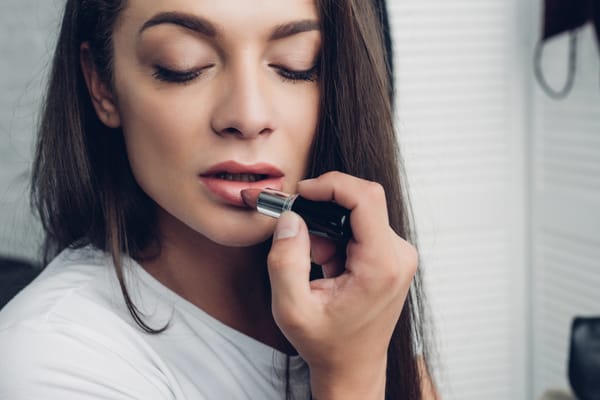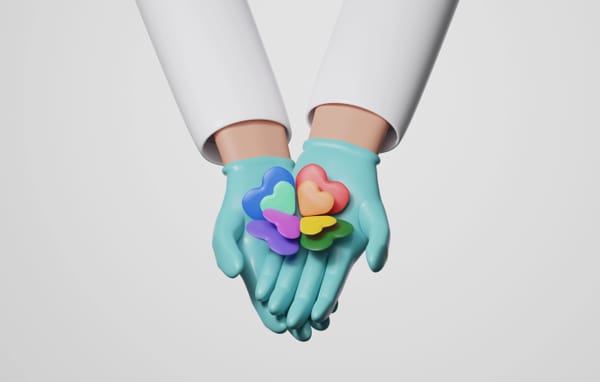Body Image, Transition, and Love: The Complexities of Intimacy in Transgender Relationships

Navigating relationships and intimacy can be a complex experience for anyone, but for transgender individuals, there are additional layers to consider, particularly when it comes to body image and self-perception. The process of transitioning, whether socially, medically, or both, often involves significant physical and emotional changes that impact how a person sees themselves and how they engage with intimate partners. These changes can influence relationship dynamics, including trust, vulnerability, and physical intimacy.
The following aims to address the unique challenges that transgender individuals may face concerning body image and intimacy in relationships, offering practical advice and helpful insights for building healthy, respectful connections.
Exploring the Link Between Body Image and Intimacy
For many transgender individuals, body image is a significant concern, especially during or after transition. Your relationship with your body can profoundly impact your self-esteem, confidence, and how comfortable you feel with intimacy.
The Role of Transitioning in Body Image
For some, transitioning is a liberating experience that allows them to align their physical appearance with their true gender. However, even after transitioning, it’s common for trans people to experience body dysphoria—a distressing disconnect between gender identity and physical body. This can manifest as dissatisfaction with certain physical traits, such as chest shape, facial features, voice, or genitalia.
The journey of transitioning, whether through hormone replacement therapy (HRT), surgery, or non-medical forms of gender expression, can alter your body over time. However, it’s important to recognize that body image concerns are not always resolved just because physical changes are made. In fact, some trans individuals report feeling uncomfortable or self-conscious even after transitioning, especially when it comes to intimate relationships.
Body Image and Intimacy
The intimate aspects of a relationship—whether emotional, sexual, or physical—are often deeply intertwined with body image. Feelings of insecurity or self-consciousness about one's body can affect how a person relates to their partner or how they engage in sexual intimacy. For example, a trans person may feel uncomfortable disrobing in front of their partner, or they might worry about how their body will be perceived during intimate moments.
On the other hand, positive body image—feeling good about your body and feeling at ease in intimate settings—can strengthen relationships, develop deeper emotional connections, and lead to more fulfilling intimate experiences.
Addressing Body Image Concerns in Relationships
Whether you're in a new relationship or have been with a partner for a while, addressing body image concerns is key to building trust, intimacy, and emotional connection. Here are some ways to approach body image issues:
Open Communication with Your Partner
One of the most important aspects of any relationship is communication. When it comes to body image concerns and intimacy, it’s crucial to have open, honest conversations with your partner about how you’re feeling. Vulnerability and transparency can foster a deeper sense of understanding and support.
- Talk About Your Body Dysphoria: If you’re struggling with body dysphoria or other body image issues, let your partner know. Be honest about how you feel about your body and what triggers your discomfort. If certain parts of your body cause you distress, your partner may be able to offer comfort and reassurance, which can ease anxiety.
- Discuss Boundaries and Comfort Zones: Establishing boundaries is essential for any relationship, particularly when it comes to intimacy. If there are aspects of physical intimacy, you’re not comfortable with—whether it’s certain types of touch or even undressing—be clear with your partner. It’s important that both parties respect each other’s limits and work toward building a relationship that feels safe and affirming.
- Encourage Positive Affirmation: Asking for and giving affirmation can go a long way in improving body image. Encourage your partner to offer positive affirmations about your body—things that make you feel seen, appreciated, and loved. This can help you feel more comfortable and confident in your own skin.
Focus on Emotional Intimacy First
In relationships, emotional intimacy often serves as the foundation for physical intimacy. Building trust, sharing vulnerabilities, and connecting emotionally with your partner can make physical intimacy feel safer and more fulfilling. If body image concerns are a major issue, it can be helpful to take a step back and focus on deepening the emotional bond before diving into physical intimacy.
Spending time on non-physical activities—such as enjoying shared hobbies, having meaningful conversations, or simply spending quality time together—can help both partners feel closer and more comfortable, making the eventual transition into physical intimacy feel more natural.
Sexual Intimacy: Overcoming Insecurities
Sexual intimacy is an important aspect of many romantic relationships, but for transgender individuals, it can be fraught with insecurity, especially if one experiences dysphoria related to certain aspects of their body. For example, a trans woman may feel anxious about her chest size or shape, while a trans man may feel uncomfortable with his genitalia. Navigating sexual intimacy while dealing with body image concerns requires patience, compassion, and open dialogue between partners.
Create a Safe Space for Vulnerability
A strong, loving relationship is built on trust and mutual respect. If you have insecurities about your body, your partner should be a safe space for you to express those feelings without judgment. Some tips for creating this safe space include:
- Reassurance: Ask your partner for reassurance and affirmation, especially when feelings of insecurity arise. A loving partner will make efforts to remind you of your beauty, your worth, and their attraction to you.
- Non-Sexual Touch: If you’re feeling self-conscious about certain parts of your body, try engaging in non-sexual physical affection that doesn’t bring up those insecurities. Holding hands, cuddling, or hugging can help build intimacy without focusing on sexual aspects of the relationship.
- Take it Slow: If you're not ready for full sexual intimacy, that's perfectly okay. Take your time and approach physical intimacy at a pace that feels comfortable for both of you. If certain activities feel triggering, it’s important to communicate those boundaries to your partner.
Consider Exploring Other Forms of Sexuality
Sexuality is not solely defined by penetrative sex. There are many ways to be sexually intimate that don’t involve the same physical expectations placed on cisgender individuals. Exploring other forms of intimacy, such as oral sex, mutual masturbation, or other non-penetrative acts, can be incredibly fulfilling without focusing on certain body parts.
Also, discussing the specific ways in which you like to be touched or receiving feedback about what your partner enjoys can make the experience more positive. Taking a holistic approach to sexual intimacy—where mutual respect and pleasure are prioritized over societal expectations of sexual acts—can help alleviate the pressures related to body image.
Body Positivity and Self-Acceptance
Building a positive relationship with your body is essential to overcoming body image concerns and feeling confident in intimacy. While this is a journey that takes time, there are several strategies to support a positive body image:
Practice Self-Love and Compassion
It’s easy to get caught up in the narrative of perfection that society often pushes, but self-compassion is key to developing a healthier relationship with your body. Recognize and acknowledge the challenges you’ve faced in your journey, and practice treating yourself with kindness. Self-love can be a daily practice, whether through positive affirmations, self-care routines, or simply being patient with yourself.
Affirm Your Gender Identity
For many transgender individuals, body image issues are closely tied to the disconnect between their physical body and gender identity. Embracing and affirming your gender identity—through both personal exploration and external validation—can foster a sense of comfort and ownership over your body. Whether it’s through clothing, hairstyle, makeup, or engaging with supportive communities, affirming your gender identity helps ease the distress associated with dysphoria.
Seek Support
Therapy, whether individual or couples therapy, can be incredibly helpful in addressing body image concerns. Working with a therapist who specializes in gender identity or body dysphoria can provide valuable tools for self-acceptance. Couples therapy can also help both partners navigate sensitive topics related to body image, intimacy, and relationship dynamics.
Helpful Resources and Support
Navigating body image and intimacy as a transgender individual can be challenging, but it’s important to know that there are resources that can provide support and guidance:
- Transgender Lifeline: A support service for transgender individuals, offering emotional support and resources. https://www.translifeline.org/
- Gender Spectrum: An organization that provides resources and support for transgender individuals and their families. https://www.genderspectrum.org/
- The Trevor Project: A resource for LGBTQ+ youth, offering support on issues related to body image, relationships, and more. https://www.thetrevorproject.org/
- PFLAG: Support for individuals and families navigating gender identity issues. https://pflag.org/
If you're looking to find a therapist who is knowledgeable about transgender issues, there are several great resources:
- The Trevor Project (www.thetrevorproject.org): Offers crisis counseling, mental health resources, and support specifically for LGBTQ+ youth.
- Therapist Directory for LGBTQ+ Clients: Websites like Psychology Today (www.psychologytoday.com) allow you to filter for therapists with experience in LGBTQ+ issues, body image, and gender identity.
- Transgender Lifeline (www.translifeline.org): Provides peer support and crisis counseling specifically for transgender individuals.
- National Queer and Trans Therapists of Color Network (www.nqttcn.com): A directory for finding therapists of color who specialize in LGBTQ+ issues.



